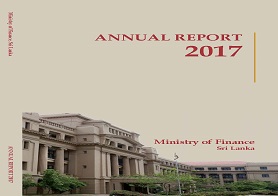Financial statements of the government have been prepared according to the Fiscal Management (Responsibility) Act No. 03 of 2003 and the other statutory provisions. The financial performance report states the financial aspects of non-tax, non-tax revenue, recurrent and capital expenditure, annual budget deficits and the budget deficit from local and foreign sources that it includes in this report. Further It includes a financial statement of the year on the closing date, representing the assets and liabilities arising from financial transactions and a fund flow statement of the government including the flow of funds in and out of the year.
After the audit of the financial statements of this Republic having included the Auditor General's report was published on the website of the Ministry of Finance and Mass Media on May 31. (Www.treasury.gov.lk)
When preparing the Financial Statements, Articles 149, 150 of the Constitution and the financial management (Responsibility) Act No.03 of 2003 as well as the provisions in Financial Regulation No. 430 are also taken into consideration.
According to the section 149 of the Constitution, All the receipts to the Republic of Sri Lanka shall be credited to the Consolidated Fund, except for the receipts of funds formed for a special purpose. Accordingly, when the expenditure is incurred by the Consolidated Fund, the required approval should be taken under the special legal services or the Appropriation Act.
This Article will be published on the 31st of May 2018 according to provisions after closing date of the financial year before five months the final budget performance report should be published for the each financial year by the Republic in terms of Section 13 of the Fiscal Management (Responsibility) Act No. 03 of 2003.
According to the Financial Regulations No. 430, the treasury discloses that declaration of assets and liabilities in Treasury books is to be disclosed by the end of the financial year.
As of 2005, the Auditor General did not agree on the methodology used to keep account for the credit of the government and the non-financial assets since the year 2005, and accordingly, financial statements of the Republic have been prepared and published in accordance with recommendations of a panel of experts. The Auditor General has agreed on the accounting system adopted in reporting the non-financial assets and credit of the government of 2017.
Accordingly, the audit opinion published by the Auditor General on the financial statements of the Republic prepared in 2017 is as follows:
"Approved Opinion -
The financial position of the financial statements of the Democratic Socialist Republic of Sri Lanka as at 31st December 2017, except for the effect on the basis of the adopted facts stated upon the basis of view quantified of this report, and its financial performance and cash flow for the year end reflecting a true and fair view, in accordance with generally accepted accounting principles that its my opinion. "
In according with the new CIGAS program, method of recognition of non financial assets, assessment and accounting that the central government owned the value of all assets of the government at present is reported as Rs. 814 billion. Non-financial assets of 21 billion rupees in 2015 were reported but it was 346 billion rupees by the year 2016. Accordingly, an action plan is being made and implemented by the Department of State Accounts in the treasury to record all non-financial assets of the central government not recorded over the next two years and to strengthen the declaration of the financial position of the Republic.
In the next 10 years, the improved modified cash basis in the public sector which is followed now shall be converted into the accounting system under accrual basis and further substantiate Accountability and Transparency In order to present a financial statement set containing all the financial information and Minister of Finance and Mass Media Mangala Samaraweera has proposed by the Budget speech 2018 and the Ministry of finance Mass media has taken steps to implement this active program.














